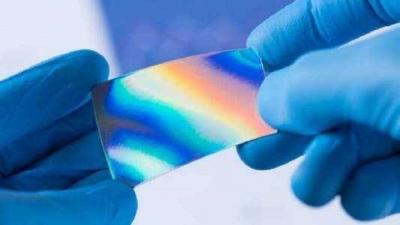Scientists from Peter the Great St. Petersburg Polytechnic University, in collaboration with Professor Rajesh Kumar from the Indian Institute of Technology in Indore, have developed a flexible material that changes color when exposed to electricity. The innovators indicate that the unit retains the acquired color in the absence of electricity. The desired shade can be achieved depending on the materials and components used. The number of colors that can be produced with this invention depends on the composition used and can be modified according to the characteristics of the electric current.
Maxim Maximov, head of the "Coating Materials and Lithium Technologies in Electric Power Sources" laboratory at the university, stated, "In this study, we obtained electrochromic materials, which were used to construct a transparent flexible unit about 1 mm thick, with the interior consisting of a transparent conductive layer coated with an organic and inorganic composite material capable of changing color when an electric current is passed through." With the help of this innovation, it has become possible to change the color of the material across a wide range of colors, increase the number of color change cycles, and accelerate the change in color to a few seconds.
According to the innovators, this technology can be used in various ways. For example, it could be used to create clothes that change color at the press of a button or applied to windows that will alter light transmission based on weather conditions. Although the technology is still in the scientific development stage, its future use in industrial sectors is not ruled out.




